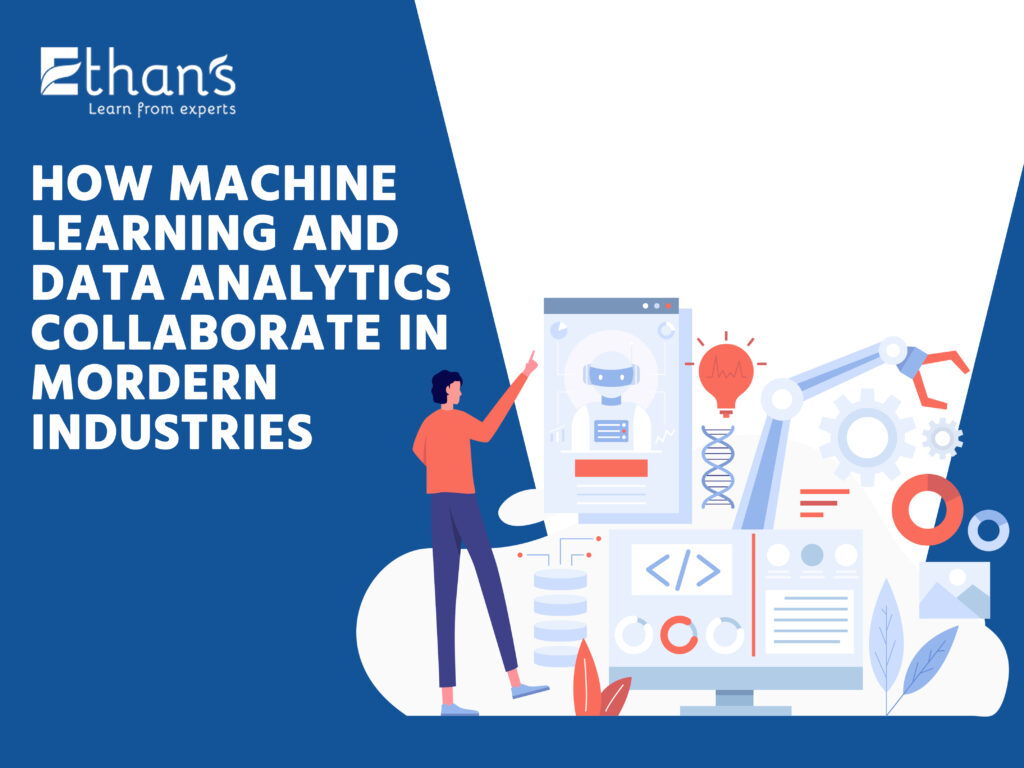Technologies are transforming businesses like never before! They are helping business owners change the way they work, strategize and fundamentally, the way they think. Yes! Machine learning and data analytics are two such transformative technologies. They are helping businesses use data better and drive more favorable outcomes. For example, machine learning involves analyzing and interpreting to drive more meaningful insights from a dataset. On the other hand, data analytics help process substantial datasets efficiently.
Of course, both these technologies excel as individual contributors. However, blending them can drive more value for businesses. How? While businesses should know this, it can also benefit you as someone looking to join machine learning classes in Pune or pursue data analysis courses in Pune. It will help enhance your knowledge and understanding of the role these technologies play when combined.
What is Machine Learning?
Data is critical to every business. It is a priceless asset businesses rely upon to make decisions, understand the macro and micro environment, comprehend their customers better, and more. Now what does machine learning do here? It is a subset of AI that helps businesses analyze massive datasets, calculate risk factors, and predict outcomes. It uses historical data to make forecasts and derive output values. No wonder, millions of companies worldwide use ML for diverse applications and benefit from it significantly.
What Do You Mean by Data Analytics?
On the other hand, data analytics involves examining large datasets to unearth various patterns, trends, and insights. It involves applying statistical and data mining techniques, along with ML algorithms to extract valuable information from the data. Consequently, data analytics helps companies identify opportunities, mitigate risks, make informed decisions, and optimize their business processes.
The Role of Machine Learning in Data Analytics
Data analytics and data science involve analyzing raw data and drawing meaningful insights. However, ML’s role extends to enabling companies to use advanced algorithms to automate data analysis and make real-time forecasts without human intervention. However, discover more about data analytics and ML collaboration and precisely, the role of ML in data analytics.
5 Stages Explaining ML’s Role in Data Analytics
ML and data analytics collaborate in a very organized manner that helps businesses reach a particular outcome. The steps include the following.
Step 1: Data Collection
Machine learning helps collect and analyze structured, unstructured, and semi-structured data from various databases in various forms.
Step 2: Cleanse and Prepare Data
Data preparation involves ML helping businesses analyze the data and prepare features associated with the business problem. Once it does that, the next step involves cleansing it to free it from inconsistencies and elements that may ruin the data’s quality and erode the decision-maker’s understanding of it.
Step 3: Model Training
Model training relies on the quality of the training data and the ML algorithm you choose, which you do per user needs. In addition, you should consider model algorithm performance, complexity, interpretability, etc., for higher model accuracy. Once you choose the correct ML algorithm, you divide your training sets into training and testing to determine the ML model’s variance and bias. The outcome of model training is a working model you can validate, test, and deploy.
Step 4: Model Evaluation and Retrain
Once you finish training your model, you can evaluate it via different metrics. To do so, choose a metric that relies on the model type and implementation plan. Although you can train and assess your model, you shouldn’t expect it to solve your problems. You can improve it further by fine-tuning the parameters to achieve better accuracy.
Step 5: Prediction
This is the final stage and the purpose of all of the above. However, when you talk about model prediction, you should also look at prediction errors. Understanding these errors will help you develop more accurate models. Besides, you can minimize prediction errors by balancing bias and variance. The above can help businesses use data better and make more informed and favorable decisions.
Applications of ML and Data Analytics in Different Industries
Let’s look at a few industries where ML and data analytics collaborate to foster the industry’s growth.
Retail
Retail is one of the largest data-driven businesses in the world. That’s because every retailer generates zillions of bytes of data every day, concerning customer preferences, sales, purchases, orders, etc., in a structured, semi-structured and unstructured form. Of course, it is practically impossible to glean insights from such massive volumes of data. Together ML and data analytics play a role here. While data analytics collects, cleanses and processes the data, ML helps retailers derive useful insights related to trends, buying patterns, seasonal sales variations, demand spikes, and more. All these insights can form the basis of planning, prediction and decision-making and serving customers better.
Healthcare
Even when it comes to healthcare, service providers who deal with thousands of patients every day and generate extensive volumes of data. These include patient information, prescriptions, appointment information, follow up information, diagnostic reports, surgical requirements, patient history, administrative data, billing and invoicing, insurance claims and so much more.
Data analytics and ML can prove useful in each of these areas. For instance, when it comes to diagnostic data, while data analytics can work on the data part and make it usable with its abilities, ML can further analyze the diagnostic reports, and identify anomalies or malign cells. These ML reports can support doctor reviews and enable more informed decision-making.
Oil and Gas
The oil and gas industry isn’t an exception to the collaborative use of ML and data analytics. For example, data analytics can help oil and gas companies collect and process global cost-related data and structure to enable further use. ML can help analyze the vast data and help the analysts draw inferences concerning price trends, patterns, global oil and gas usage, demand and supply equations and much more. It can help them support the company’s decision-making and strategy concerning competitive pricing in the global market.
Conclusion
Of course, the above is fundamental. There’s much more that you can explore once you enter the industry as a professional. With our machine learning classes in Pune and comprehensive data analytics courses in Pune, we can help you make a prepared and promising entry into the industry. Call us at +91 95133 92223 to learn more about ML, data analysis, and business analytics courses in Pune.



